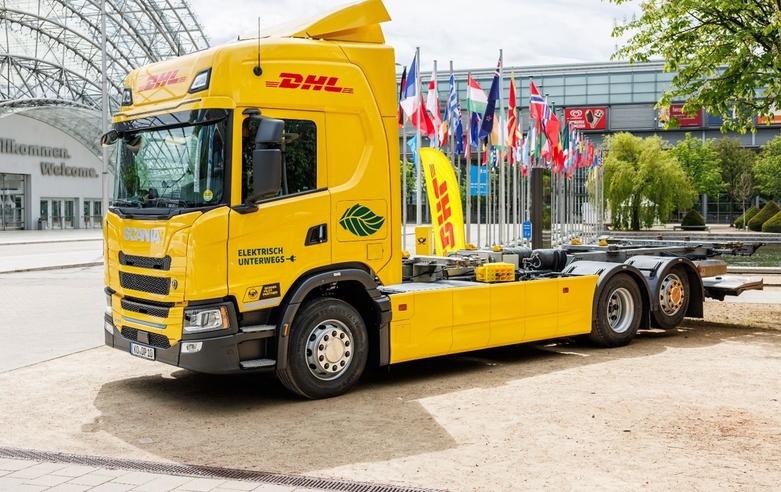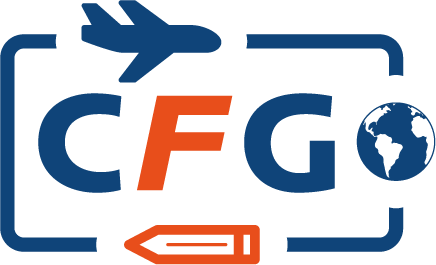The test drives on the Hamburg-Berlin route lasted exactly 100 days (280+ km), and covered a total of 22,000 km. The trials were carried out using a new Scania-built e-truck which contains a built-in range extender – the only of its kind worldwide. The unique vehicle has now been presented to a specialist audience at the International Transport Forum in Leipzig. It increases the performance reliability of the integrator’s road network. However, Brussels has the last say.
DHL calls it a “bridging technology”. The ‘Extended Range Electric Vehicle’ (EREV), which has now been presented to the public under this unwieldy name, has proven its suitability for everyday use on the above route between Germany’s two largest cities. Scania speaks of a turnkey solution since the vehicle enhances operational flexibility by providing an additional energy reserve when no charging station is available. This increases its usability for operators, in contrast to a fully e-powered truck.

New CO2 category is needed
EREV represents a novel concept with great potential to support the transition to electrified transport. It saves more than 90% of CO2 emissions compared to a conventional diesel truck, the testing phase has proved. Critics may object that greenhouse gases still account for 10% of emissions. Scania counters the argument by stressing that 10% is an enormous CO2 saving rate compared to common diesel-powered trucks.
However, there are legislative stumbling blocks, as EU law does not currently include an emissions category to which this type of truck can be assigned. Hence, DHL is urging policymakers to introduce an additional emissions class that recognizes proportional CO2 emissions under road toll legislation, based on certified emissions data. This even more since practical tests of the EREV have evidenced that the vehicle’s environmental performance comes close to that of a full electric truck.
Pragmatic concepts are required
That said, DHL expressly welcomes the new German government’s coalition agreement, which includes support for EREVs, as a step in the right direction, and calls for timely implementation in applicable EU regulations.
‘We all, businesses, politics, and society – want fewer emissions through increased e-mobility in freight transport. At the same time, all experts know that the transition to fully electric trucks will take many years, primarily because the grid and charging infrastructures are still inadequate,” Tobias Meyer, CEO of DHL Group, said. Instead of waiting for a perfect technical solution, pragmatic concepts like the EREV are needed, flanked by quick political decisions, he stated. “We want to decarbonize the transport sector now and regulation should not hinder but support us to do so.”
Main novelty: the range extender
Since February, the EREV has been used in DHL’s Post & Parcel Germany division for transport between the parcel centers in Berlin and Hamburg. On colder days or when facing unpredictable charging difficulties (such as charging stations being occupied or malfunctioning) that led to requiring an additional range, the range extender was turned on. It serves as a backup, enabling additional miles. This facilitates reliable route planning – something that is indispensable in logistics.
In the trials, the EREV operated 92% on grid-charged energy, with only 8% of the power provided by the built-in range extender. Going forward, emissions could be further reduced by using fuel from renewable sources such as biodiesel, for the small share of energy provided through the generator.
Next steps
The energy of the 10.5-meter-long truck currently comes from a 416 kWh battery and a fuel-powered 120 kW generator. The next version is expected to feature a larger battery with 520 kWh. The truck’s maximum speed is limited to 89 km/h, and it has a capacity of about 1,000 packages, resembling the volume of a swap body. Additionally, the truck can tow a trailer with another swap body.
Whether DHL will acquire more EREV units depends on the recognition and support of the vehicle in the relevant European and national regulations such as the road toll legislation. The test results have been very positive and promising – the technology is fully ready, and so is DHL, the integrator stresses in a press release. Scania is one of the largest suppliers of heavy trucks in Europe (68.4% of all deliveries) and South America (19.3%). The Swedish company is part of the Volkswagen Group.




